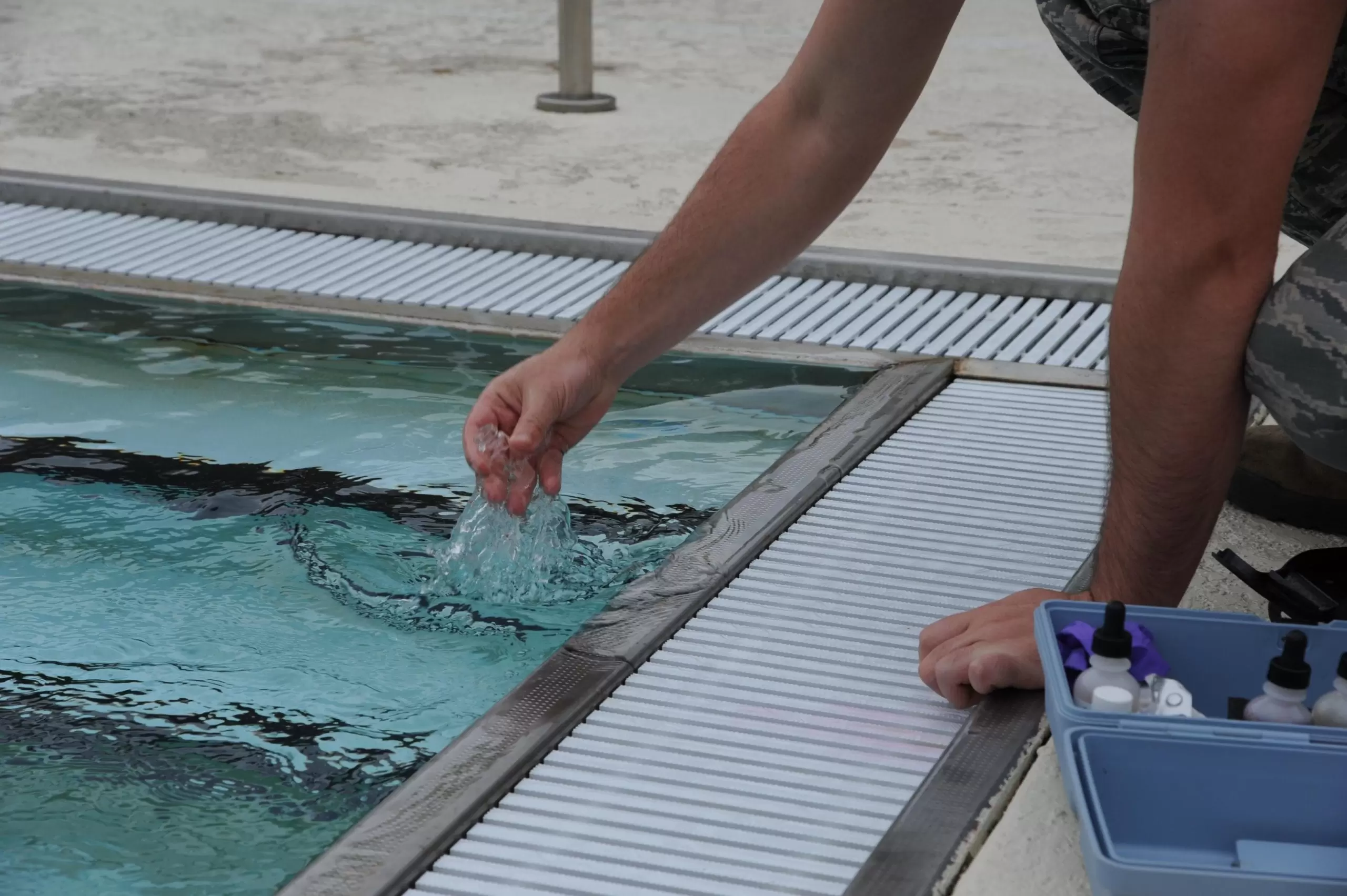Maintaining your pool cleanliness should be straightforward if done on a consistent basis, but if time and energy constraints prevent this, professional help might be your best solution.
DIYing may not be suitable for everyone, but if you possess the knowledge and abilities needed to efficiently maintain and clean your pool on your own it could be a cost-saving move.
1. Skim the Surface
Skimming should be conducted regularly to remove debris from a pool and protect swimmers from algae growth that could otherwise make swimming unsafe or unpleasant. Leaves, pollen, bugs and other forms of dirt deposited on its surface can become lodged there and cause an unsightly buildup that clogs up its depths, leading to bacteria accumulation on its surface and making for unattractive sightlines as well as being hazardous.
Leaf skimmer is one of the easiest and simplest ways to keep your pool clean. Simply attach the skimmer to your telescopic pole, and begin regularly skimming its surface.
Manual pool vacuums provide another means of keeping your pool clean. By slowly, parallel-line vacuuming the surface, all floating debris is captured before it settles to the bottom and causes staining or other complications.
Solar-Breeze NX2 robotic pool skimmers make skimming your pool an effortless process, effectively sucking up leaves, flowers, grass clippings, bugs and debris from its surface before collecting it all and storing it until you empty its tray once every few days.
2. Brush the Sides
Maintaining a clean pool environment is paramount to enjoying a pleasant swimming experience and keeping health. Anything from leaves, mold, organic debris and hair products such as perfumes can find their way into your pool and cause harmful contamination, so proper maintenance must be ensured at all times.
Brushing the sides of your pool regularly is crucial to its maintenance; doing so helps loosen and remove all dirt, grime, and other forms of debris that might adhere to its walls.
Chemical dosimeter systems also help prevent biofilm growth on your pool’s surface and lessens the likelihood that algae takes hold on it, while dissipating chemicals evenly across its surface.
3. Clean the Pump and Skimmer Baskets
Your pool’s skimmer and pump baskets are essential in protecting its cleanliness. As they collect debris before it enters the filter system, these should be cleared regularly for optimal performance and upkeep. A weekly cleanup should ensure optimal functioning.
Clogged skimmer baskets can put additional strain on your pool pump, shorten its lifespan, and potentially pollute its contents with germs that cause illness in humans and fish alike. Regular maintenance of both will keep them working efficiently while also guaranteeing safe pool water conditions for swimming. To keep things hygienically safe and germ-free.
Cleaning the skimmer and pump baskets is usually straightforward and requires minimal skill, although it’s important to note that failure to clear away all debris may lead to them becoming brittle and cracking over time.
4. Clean the Filter
No matter if it is a cartridge filter, sand filter or DE filter system in place at your pool, filter maintenance and upkeep is an integral component to keeping it operating at peak performance. Each type has their own specific cleaning process for maintaining quality performance.
Sand filters require extra maintenance as they accumulate dirt and debris that impedes their waterflow. You can determine if your sand filter requires cleaning by monitoring its pressure gauge at both its inlet and outlet pipe.
If your pressure gauge reads more than 10 PSI, backwash and clean your system so it can run more efficiently again.
Cartridge filters can be easily and safely cleaned using a spray and soak approach, eliminating debris build-up that causes cloudy pool water. This process will extract any trapped debris as well as any scale deposits that cause cloudiness to your pool water.




